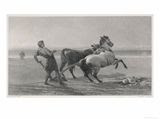
Although I liked the subliminal messages implied by the representational use of the Brooklyn Bridge, (Brooklyn = real, gritty, but cool) I wasn't sure if a MySpace account was really authentic web design, so I did a search for the best musical artist website and I found an article Wikipedia article that told me there was a MTV Video Music Award for Best Artist Website design given out only one time, in 1999, to the musical group Red Hot Chili Peppers.
This IRS site is primarily text-based with very little visual content, or useful icons. The navigation was easily accomplished, but the site itself was very tedious to navigate, with the eyes of the viewer having no particular point of focus. Tell the truth - the IRS site makes you want to either escape quickly or go to sleep, right?
So, in search of a better example, I left this site and traveled into outer-space , courtesy of NASA. Wow, what a site! This site has everything - an almost equal blend of representational and informational material, including interactive learning tools, artist's renderings and beautiful photography, videos, charts, iPhone applications, Twitter feeds, and over 40 NASA blogs!
The NASA site has very effective visual imagery, including icons that use the symbols of the actual object to lead to more detail via icon links, such as a shuttle icon that takes you to the history of shuttle mission, information about the shuttles, etc.; 
The wayfinding and navigation on this site is probably the most impressive aspect of the NASA design, with a seemingly endless selection of links to NASA information. After spending over one hour on the site, I counted over 500 active pages and icons. I could easily spend an entire day
just exploring this site!
During this process of site analysis, I did learn several new things: some of the content analysis would be obvious to anyone - for example, how the tremendous power of the visual content on the NASA site engages the viewer, and makes you want to continue to explore, in contrast to the IRS site. But other lessons were more intuitively processed: the use of the heavy text without visual leads made the navigation of the IRS site difficult, with no clear wayfinding process illustrated.
The heavy text also made my eyes tire more quickly, and I quickly lost interest in trying to find new pages, as the end result of using this wayfinding felt more like a chore. In contrast, the NASA site did not feel tedious at all; in fact, it felt like an adventure of discovery.The very effective use of the latest technologies made the NASA site appear fresh, but formal, savvy without immaturity. In the NASA site navigation, you almost feel as if you don't need words very much with the representation material, and that the words are being used more as a crutch, but when you get into the informational material, words become more important.






No comments:
Post a Comment